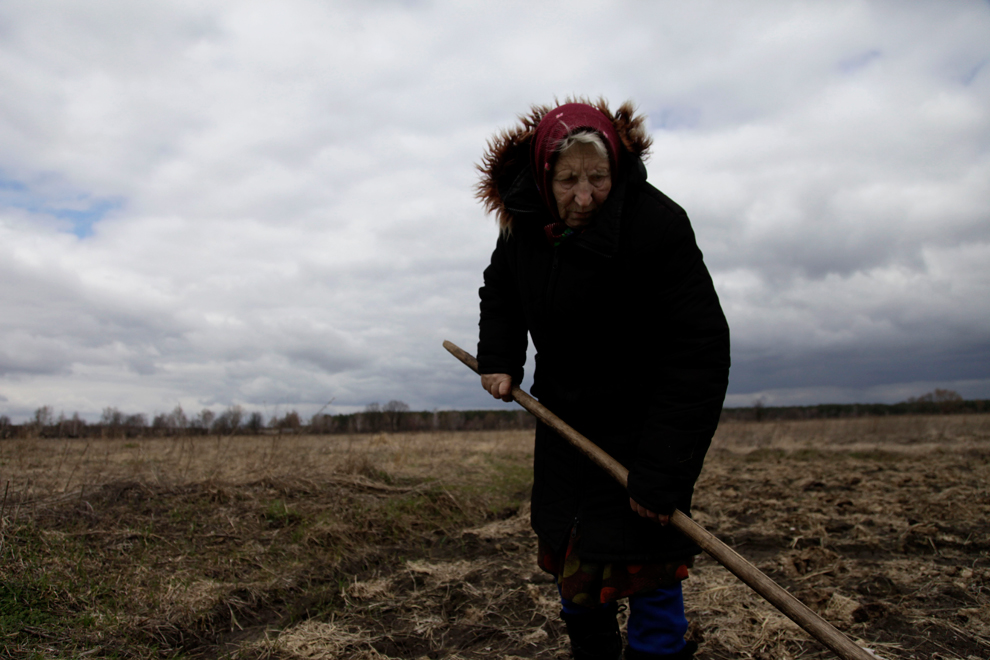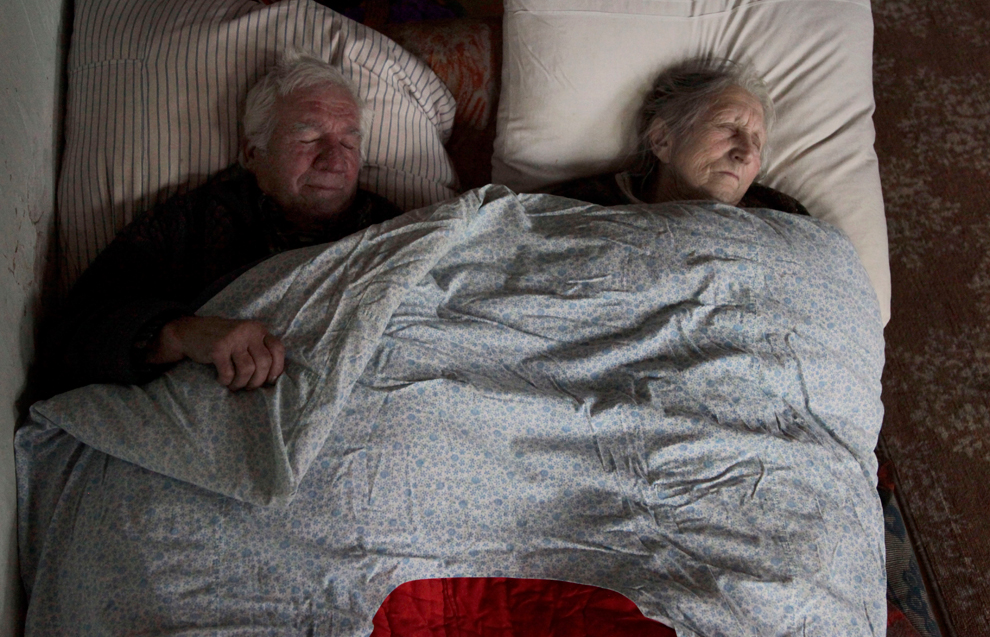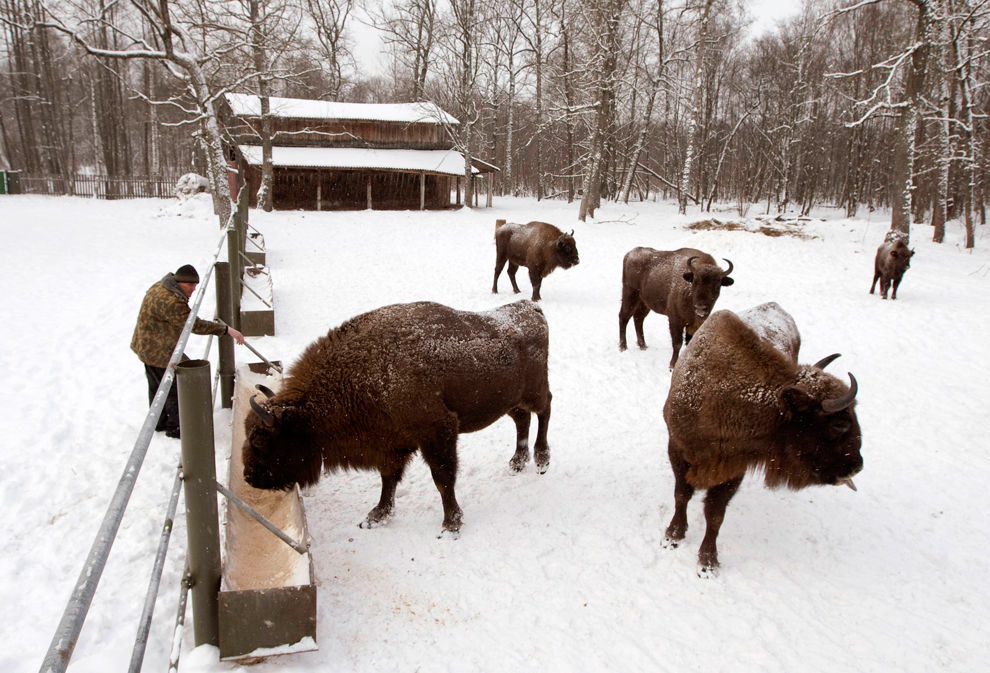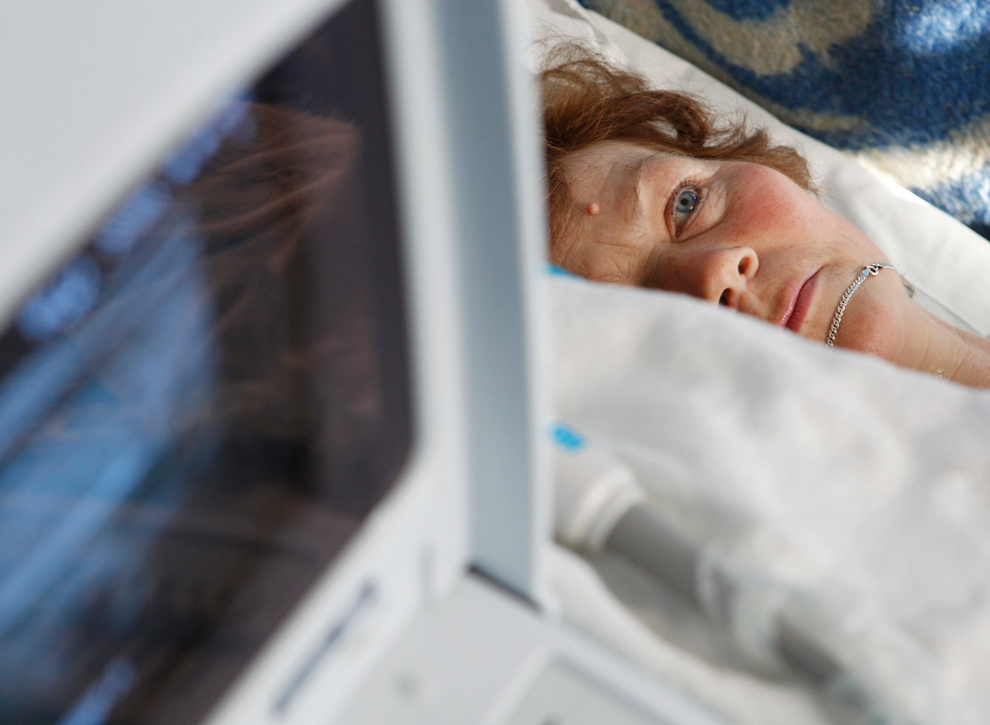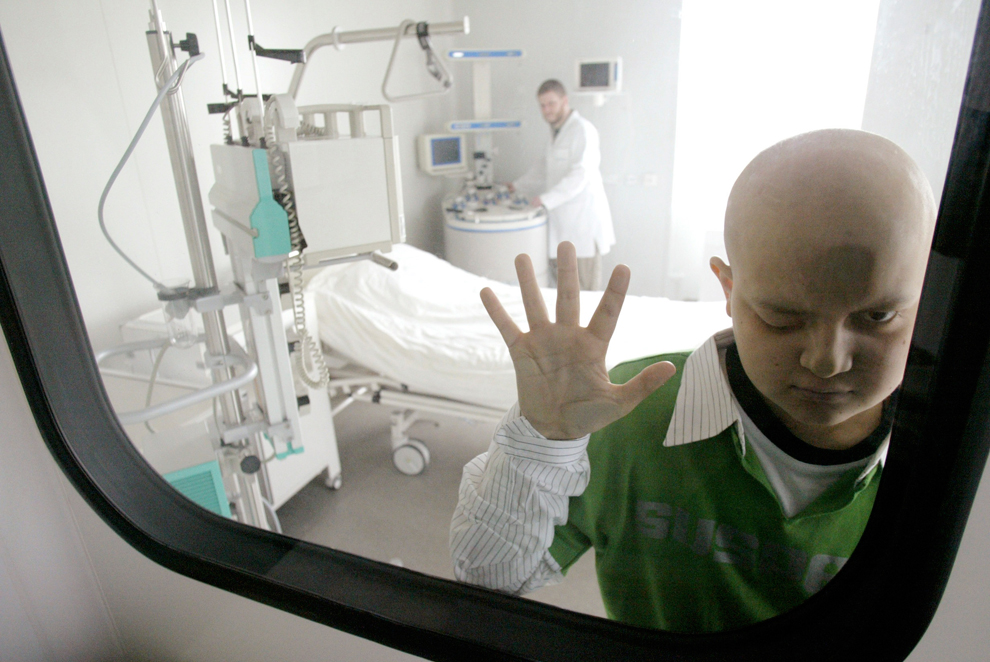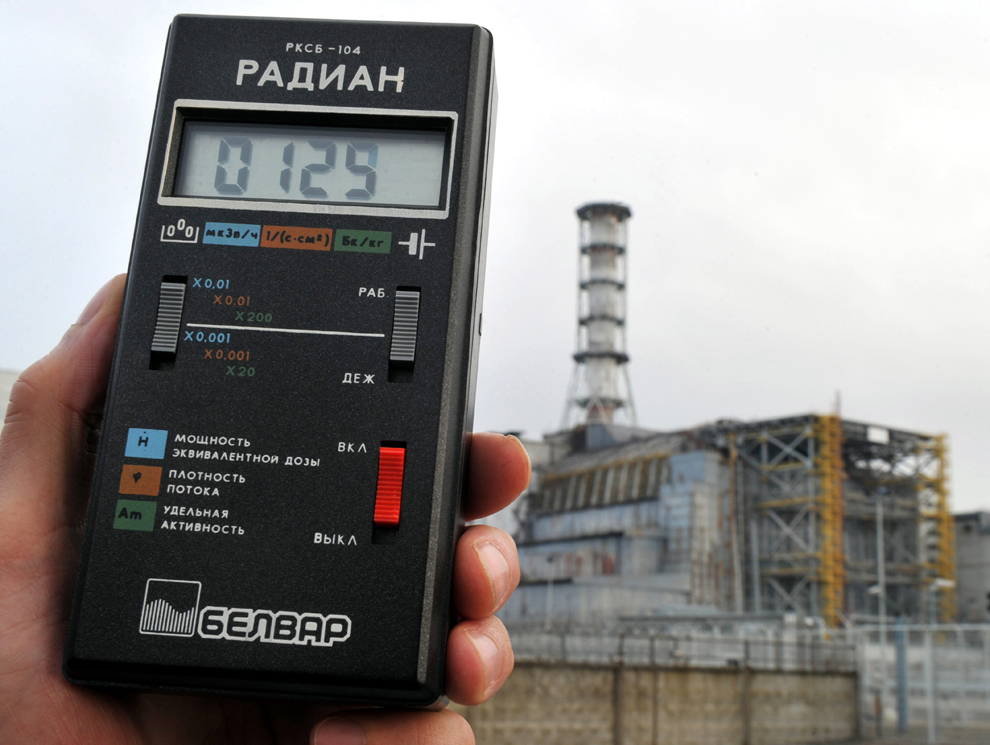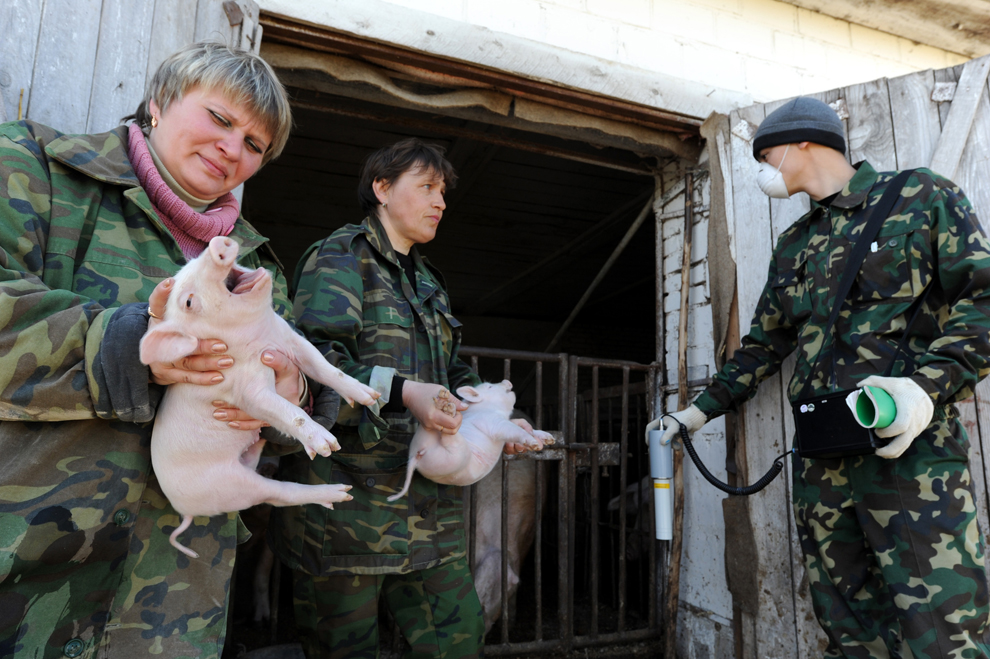Proprio in questi giorni c'è statyo l'anniversario del disastro di Chernobyl.
Big Picture ha raccolto immagini di ieri e di oggi, pre non dimenticare, anche visto i recenti disastri nipponici.
La storia
Černobyl (Чорнобиль, Čornobyl, in lingua ucraina, Чернобыль, Černobyl', in russo) è il nome di una città dell'Ucraina settentrionale, situata circa 100 km a Nord di Kiev.
Attualmente quasi disabitato, è stato un importante centro industriale e commerciale in particolare nel XIX secolo. Il nome della città deriva da una combinazione tra chornyi (чoрний, "nero") e byllia (билля, "steli d’erba" o "gambi"); il suo significato letterale sarebbe, quindi, "stelo d’erba nero"; la ragione di questo nome non è ben nota ed esistono varie ipotesi, una di queste ne afferma la derivazione dalla parola ucraina che definisce la pianta Artemisia vulgaris.
La città è principalmente nota per aver legato il suo nome ad un grave incidente nucleare che ebbe enorme impatto geografico e storico, benché la famosa centrale nucleare non si trovi qui, ma nei pressi della città di Pripjat', totalmente evacuata dopo l'esplosione. La città di Černobyl', nonostante si trovi a solo 30 km dalla centrale, è stata relativamente poco colpita dagli effetti delle radiazioni, che si sono diffusi velocemente verso nord, in Bielorussia (Voblasc' di Homiel'), mentre a sud gli effetti sono stati relativamente marginali. A causa del livello di radioattività non altissimo, sceso a valori tra 100 e 1000 volte inferiori ai dati registrati inizialmente gli operai, attualmente ancora impiegati per il risanamento della centrale, ed alcuni civili vivono ancora in città.
La catastrofe ambientale
Il nome di Černobyl divenne famoso in tutto il mondo dopo il 26 aprile del 1986 quando, in seguito a gravi errori del personale, irresponsabilità dei dirigenti ed errori di progettazione, durante l'esecuzione di un test nella locale centrale elettronucleare, nel corso di una simulazione di guasto al sistema di raffreddamento, le barre di uranio del nocciolo del reattore nucleare si surriscaldarono per davvero fino alla fusione del nocciolo del reattore n° 4, con due conseguenti esplosioni (non nucleari ma con effetto 100 volte superiore a quello di Hiroshima e Nagasaki, se messe assieme in termini di contaminazione ambientale), che fecero scoperchiare la copertura e disperdere nell'atmosfera grandi quantità di vapore contenente particelle radioattive.
Si levò una nube radioattiva, che il vento portò in tutta Europa e che raggiunse il Mediterraneo nei successivi 14 giorni. La pioggia contribuì poi a riportare a terra le particelle radioattive, che possono essere rilevate ancora oggi con un contatore Geiger a circa 10 centimetri sotto la superficie. Per due settimane, operai ed elicotteristi dell'aviazione russa ricoprirono il nocciolo fuso dall'alto, con sabbia a base di boro, silicati, dolomia e piombo, finché l'emissione di vapore radioattivo cessò sabato 10 maggio 1986.
36 ore dopo l'incidente iniziò l'evacuazione dell'area di Černobyl dalla popolazione residente. Le conseguenze sulla popolazione locale furono molto forti nelle prime fasi dell'incidente e durano ancora malgrado i decenni trascorsi.
Circa 350.000 persone furono evacuate dalla città e dalle zone adiacenti. Nonostante le radiazioni emesse durante quella catastrofe, la città, con 800 anni di vita, riuscì a sopravvivere, anche se mutilata. Vi risiedono ancora operai governativi, impegnati nella rimozione delle scorie nucleari. Circa 700 persone, per lo più anziani, hanno scelto di tornare alle loro case, incuranti del pericolo.
Nell'ottobre del 1988 si parlò di radere al suolo una parte della città a causa del forte inquinamento radioattivo, soluzione in seguito abbandonata per l'enorme quantitativo di particelle radioattive che si sarebbero sollevate assieme alle macerie degli edifici demoliti.
Il reattore distrutto fu ricoperto da una struttura di contenimento, chiamata sarcofago, e la centrale di Černobyl è stata mantenuta in funzione a regime parziale e ha continuato a fornire energia elettrica alla città di Kiev fino all'anno 2000, quando l'ultimo reattore in esercizio è stato spento.
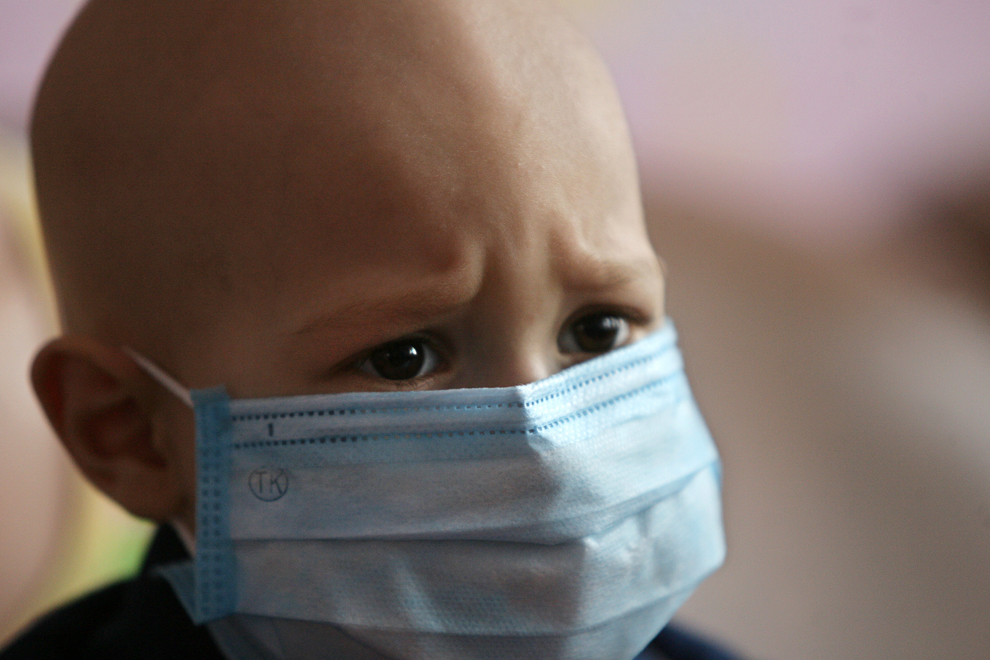
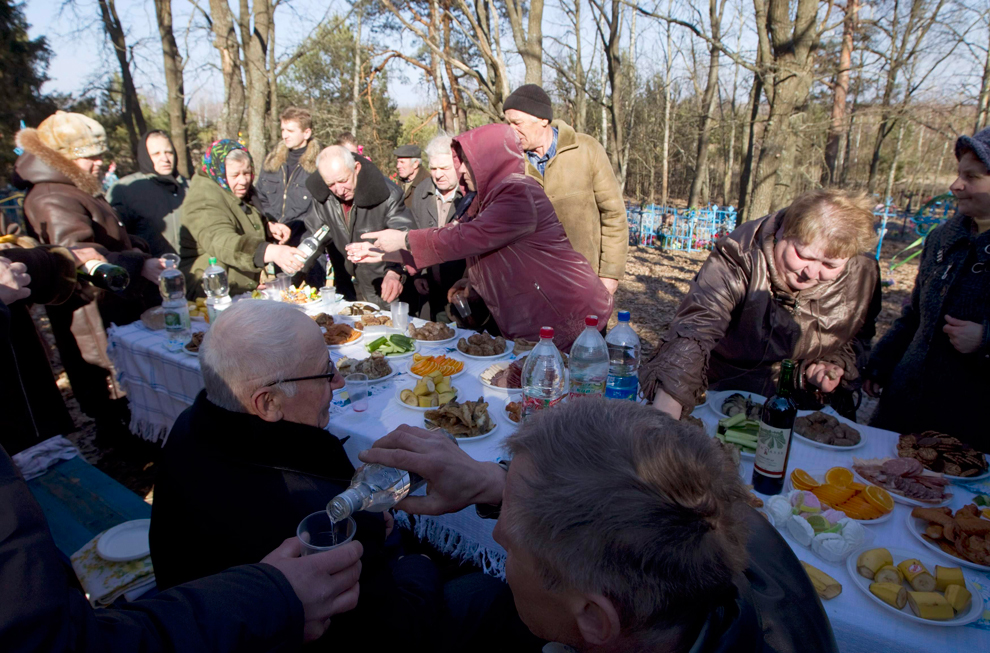
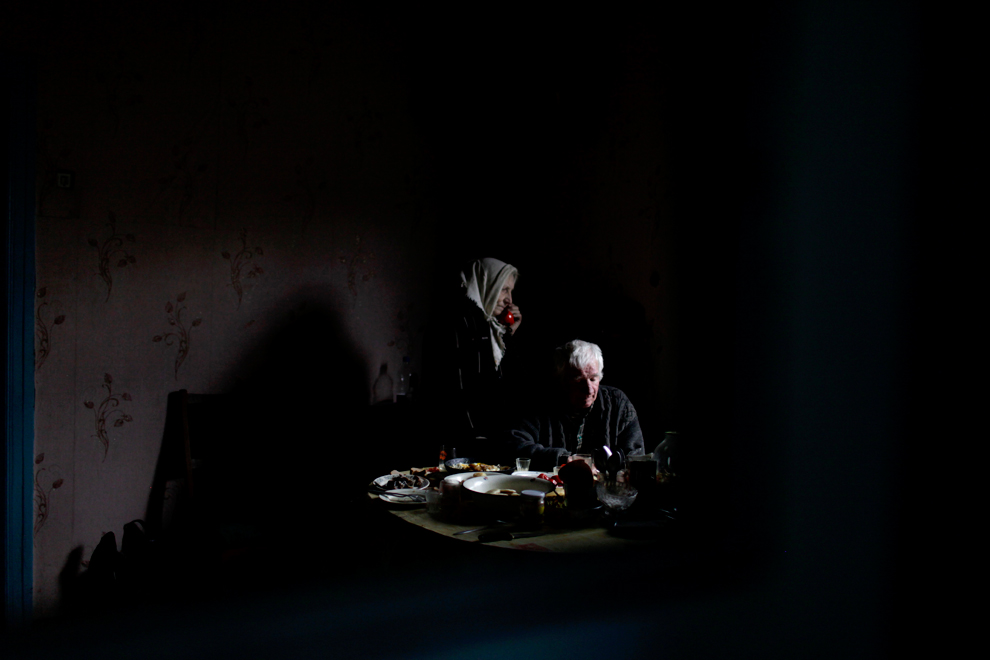
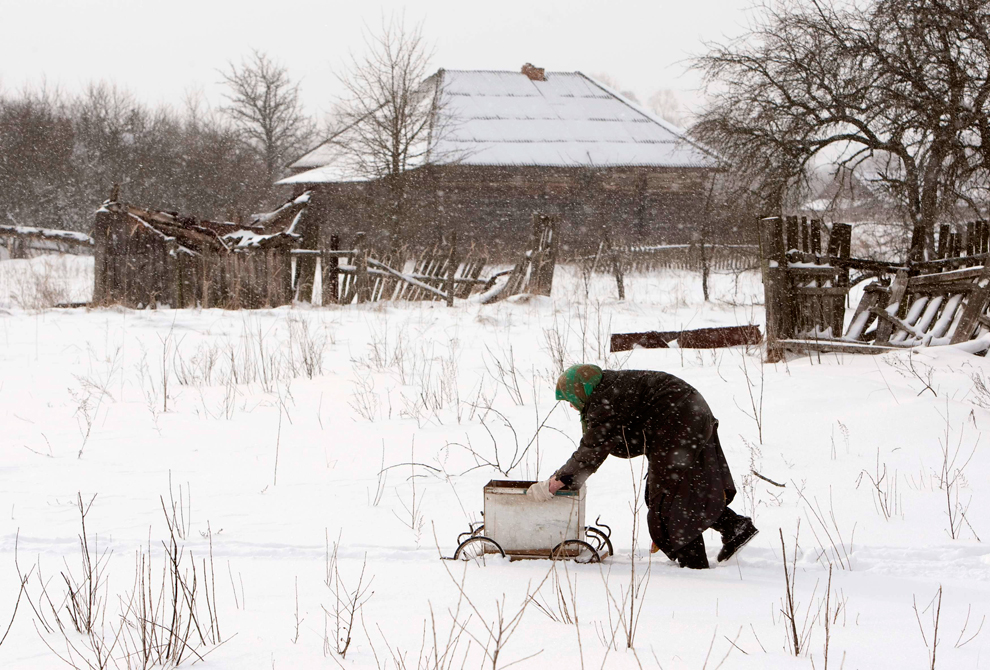
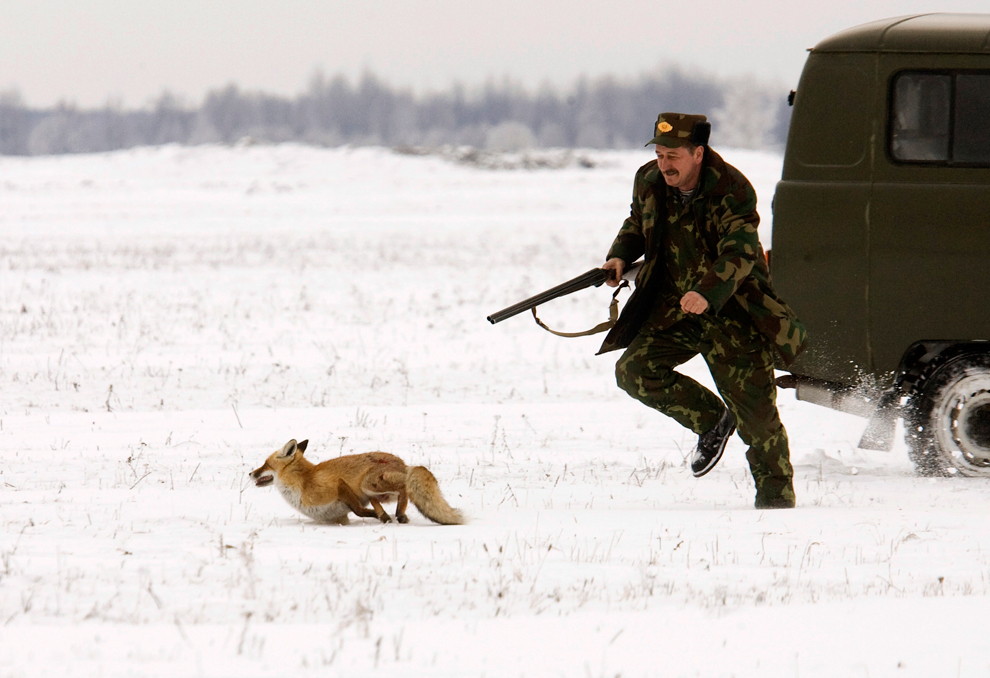
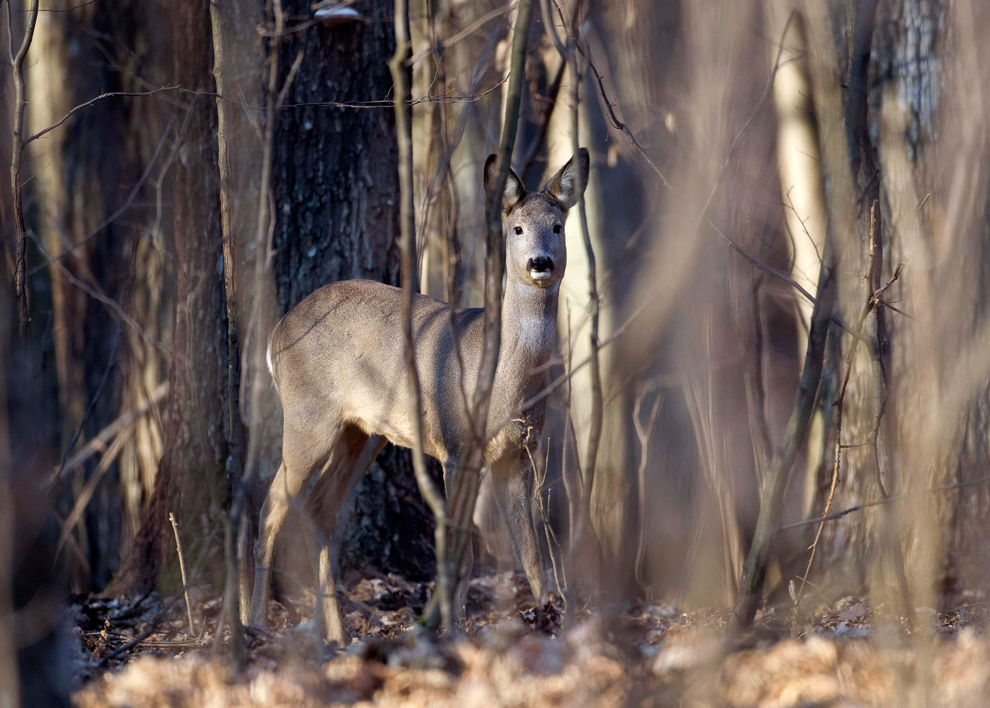
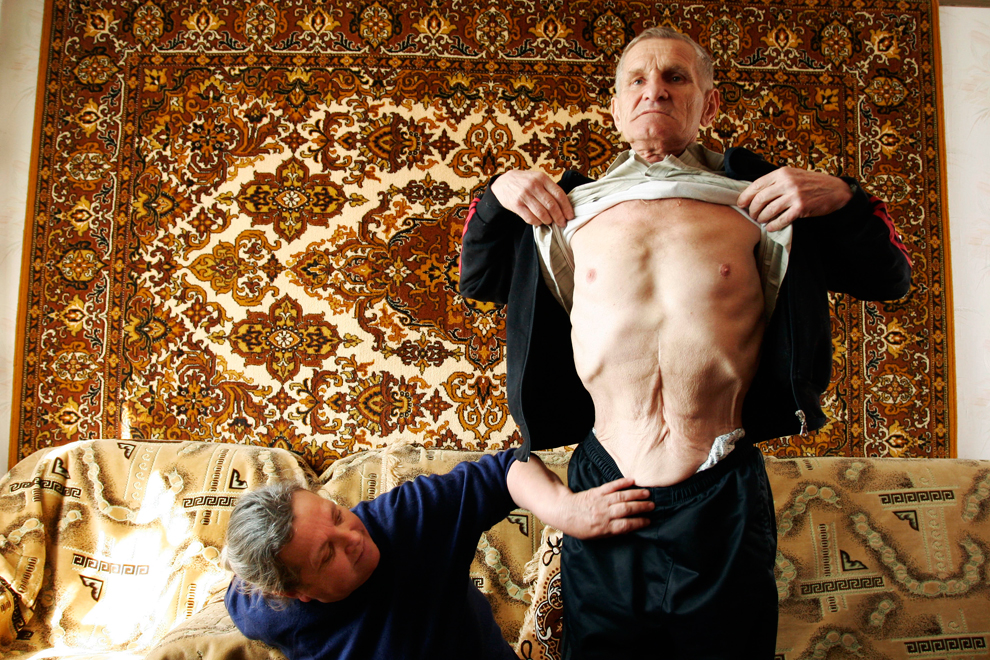
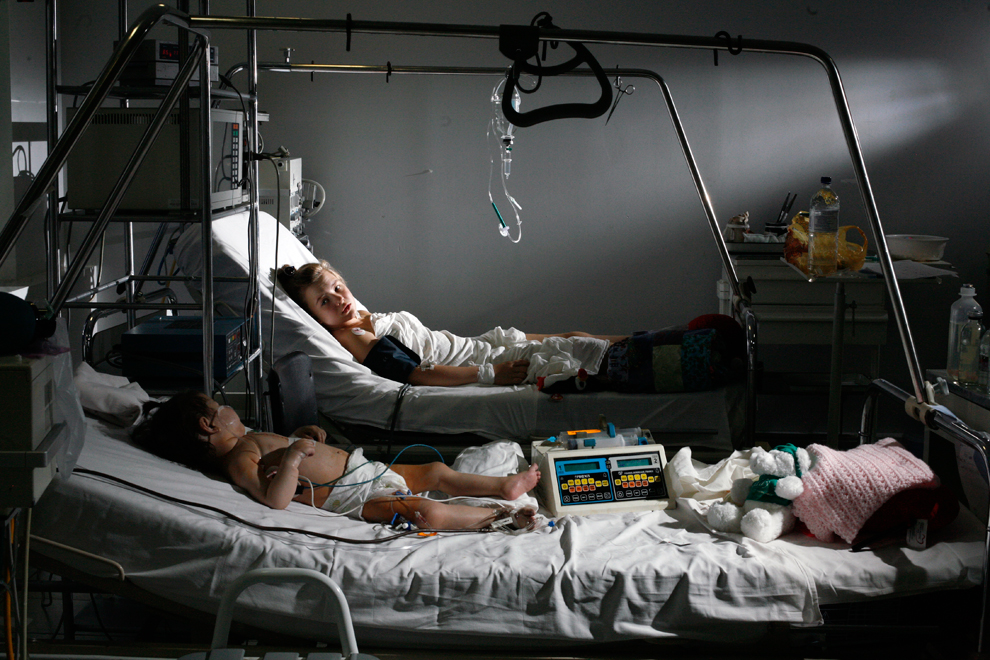
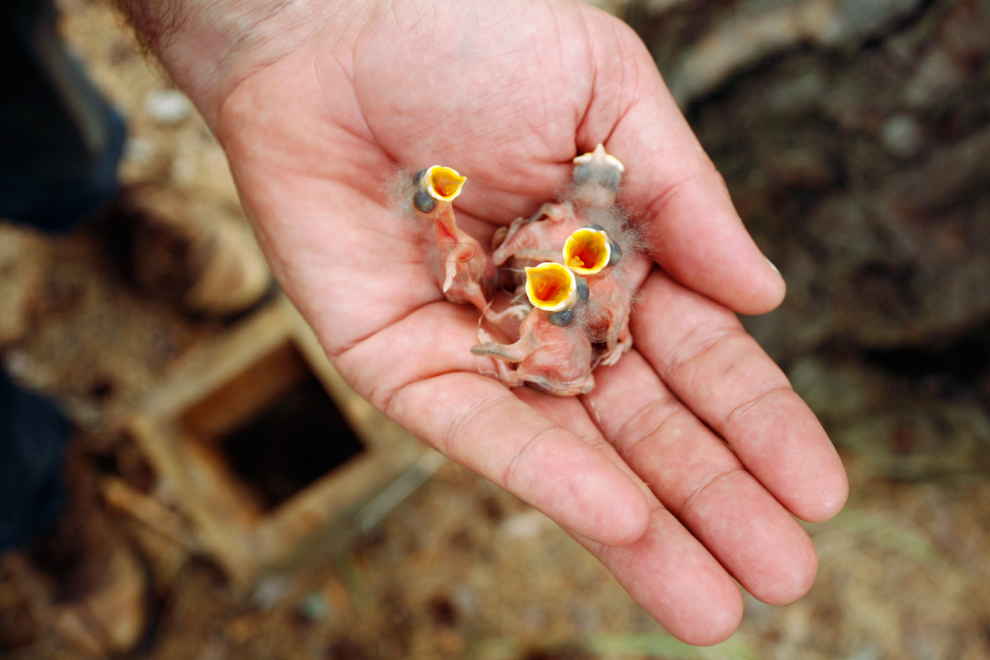

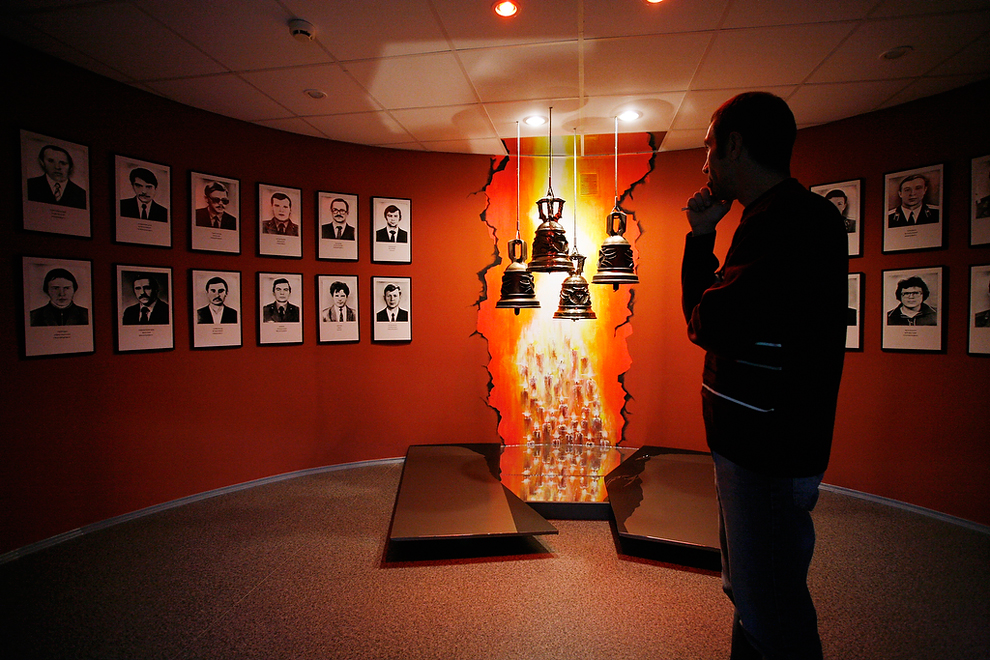
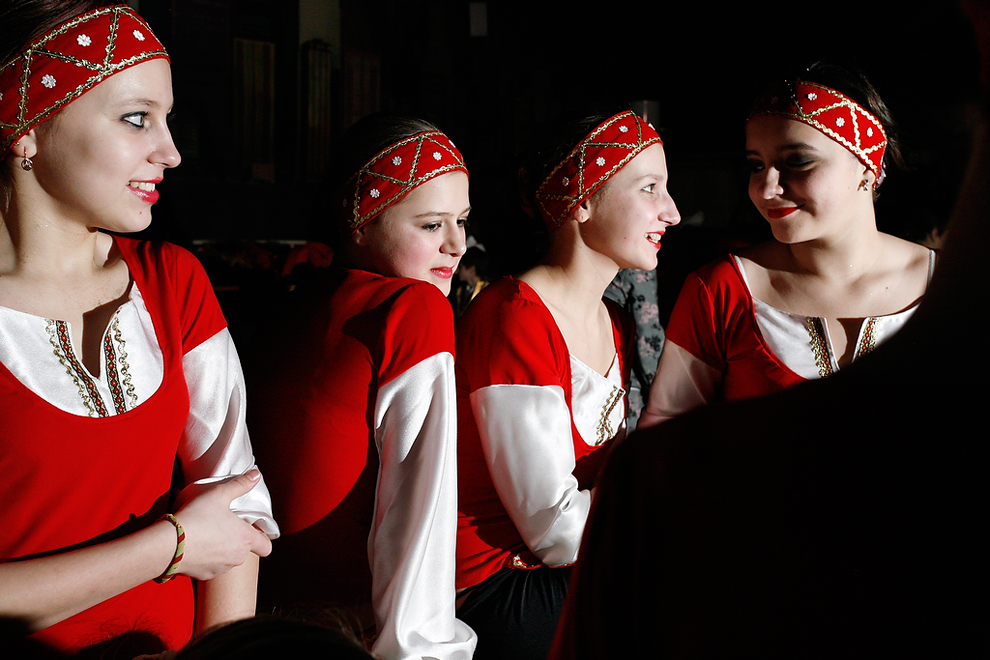


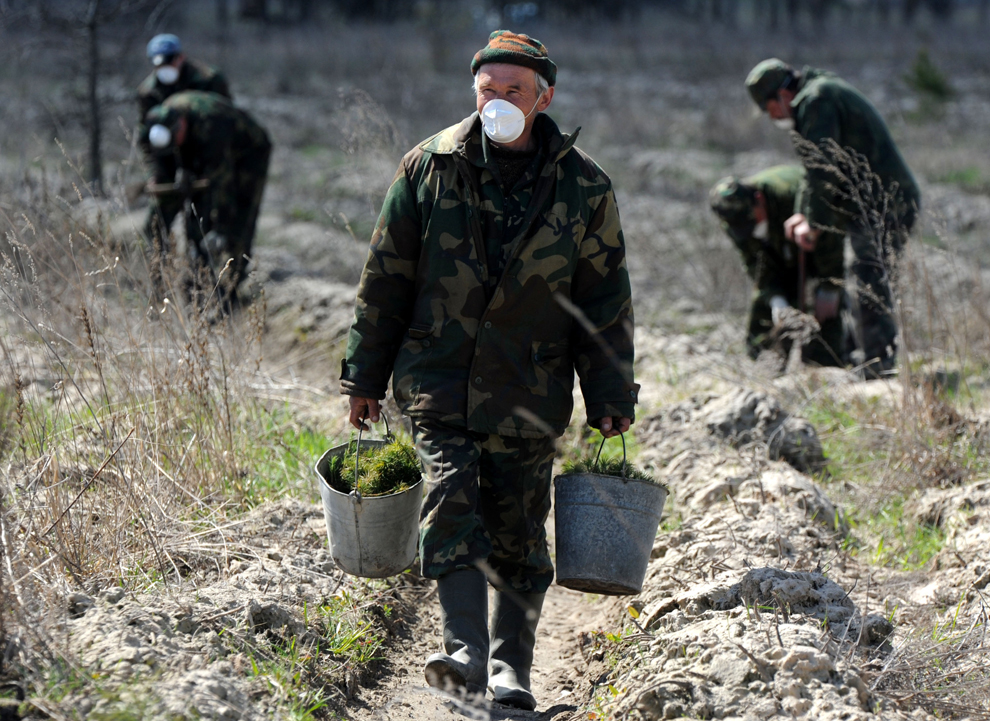
Fonti:
Big Picture
Wikipedia
Big Picture ha raccolto immagini di ieri e di oggi, pre non dimenticare, anche visto i recenti disastri nipponici.
La storia
Černobyl (Чорнобиль, Čornobyl, in lingua ucraina, Чернобыль, Černobyl', in russo) è il nome di una città dell'Ucraina settentrionale, situata circa 100 km a Nord di Kiev.
Attualmente quasi disabitato, è stato un importante centro industriale e commerciale in particolare nel XIX secolo. Il nome della città deriva da una combinazione tra chornyi (чoрний, "nero") e byllia (билля, "steli d’erba" o "gambi"); il suo significato letterale sarebbe, quindi, "stelo d’erba nero"; la ragione di questo nome non è ben nota ed esistono varie ipotesi, una di queste ne afferma la derivazione dalla parola ucraina che definisce la pianta Artemisia vulgaris.
La città è principalmente nota per aver legato il suo nome ad un grave incidente nucleare che ebbe enorme impatto geografico e storico, benché la famosa centrale nucleare non si trovi qui, ma nei pressi della città di Pripjat', totalmente evacuata dopo l'esplosione. La città di Černobyl', nonostante si trovi a solo 30 km dalla centrale, è stata relativamente poco colpita dagli effetti delle radiazioni, che si sono diffusi velocemente verso nord, in Bielorussia (Voblasc' di Homiel'), mentre a sud gli effetti sono stati relativamente marginali. A causa del livello di radioattività non altissimo, sceso a valori tra 100 e 1000 volte inferiori ai dati registrati inizialmente gli operai, attualmente ancora impiegati per il risanamento della centrale, ed alcuni civili vivono ancora in città.
La catastrofe ambientale
Il nome di Černobyl divenne famoso in tutto il mondo dopo il 26 aprile del 1986 quando, in seguito a gravi errori del personale, irresponsabilità dei dirigenti ed errori di progettazione, durante l'esecuzione di un test nella locale centrale elettronucleare, nel corso di una simulazione di guasto al sistema di raffreddamento, le barre di uranio del nocciolo del reattore nucleare si surriscaldarono per davvero fino alla fusione del nocciolo del reattore n° 4, con due conseguenti esplosioni (non nucleari ma con effetto 100 volte superiore a quello di Hiroshima e Nagasaki, se messe assieme in termini di contaminazione ambientale), che fecero scoperchiare la copertura e disperdere nell'atmosfera grandi quantità di vapore contenente particelle radioattive.
Si levò una nube radioattiva, che il vento portò in tutta Europa e che raggiunse il Mediterraneo nei successivi 14 giorni. La pioggia contribuì poi a riportare a terra le particelle radioattive, che possono essere rilevate ancora oggi con un contatore Geiger a circa 10 centimetri sotto la superficie. Per due settimane, operai ed elicotteristi dell'aviazione russa ricoprirono il nocciolo fuso dall'alto, con sabbia a base di boro, silicati, dolomia e piombo, finché l'emissione di vapore radioattivo cessò sabato 10 maggio 1986.
36 ore dopo l'incidente iniziò l'evacuazione dell'area di Černobyl dalla popolazione residente. Le conseguenze sulla popolazione locale furono molto forti nelle prime fasi dell'incidente e durano ancora malgrado i decenni trascorsi.
Circa 350.000 persone furono evacuate dalla città e dalle zone adiacenti. Nonostante le radiazioni emesse durante quella catastrofe, la città, con 800 anni di vita, riuscì a sopravvivere, anche se mutilata. Vi risiedono ancora operai governativi, impegnati nella rimozione delle scorie nucleari. Circa 700 persone, per lo più anziani, hanno scelto di tornare alle loro case, incuranti del pericolo.
Nell'ottobre del 1988 si parlò di radere al suolo una parte della città a causa del forte inquinamento radioattivo, soluzione in seguito abbandonata per l'enorme quantitativo di particelle radioattive che si sarebbero sollevate assieme alle macerie degli edifici demoliti.
Il reattore distrutto fu ricoperto da una struttura di contenimento, chiamata sarcofago, e la centrale di Černobyl è stata mantenuta in funzione a regime parziale e ha continuato a fornire energia elettrica alla città di Kiev fino all'anno 2000, quando l'ultimo reattore in esercizio è stato spento.

A child wears a mask in a hospital for leukemia patients in Donetsk, Ukraine on March 23. The blasts at the Soviet-era plant created a cloud of radioactive dust that drifted over a large swathe of Europe and still haunts millions of people in Ukraine and its neighbors. (Alexander Khudoteply/AFP/Getty Images) #

Villagers dine in memory of Maria Borisenko, 76, at a cemetery in the 19-mile exclusion zone around the Chernobyl nuclear reactor in the abandoned village of Lomysh on March 18. Borisenko had been evacuated many years ago after the Chernobyl blast, but after her death was carried back to her homeland for burial. (Vasily Fedosenko/Reuters) #

Lida Masanovitz stands beside her husband, MIkhail Masanovitz, 73, as she speaks to her daughter on the phone. After the Chernobyl accident on April 26, 1986, Masanovitz's daughter was hospitalized and treated for thyroid issues. An estimated 7 million people in the former Soviet republics of Belarus, Russia and Ukraine suffered from radiation-linked ailments, including thyroid and circulation problems after the accident. (Diana Markosian/Redux Images) #

A Belarussian villager pushes a trolley in the village of Tulgovichi, near the 19-mile exclusion zone around the Chernobyl nuclear reactor on February 22. Today, the Belarus border region from which the locals were evacuated in 1986 is a weird, overgrown wilderness - teeming with wildlife but virtually devoid of people, its shops and homes fast disappearing under a tangle of foliage. The village of Tulgovichi, which once had about 1,000 inhabitants, is still home to a handful of pensioners who have stubbornly resisted moves to get them to leave. (Vasily Fedosenko/Reuters) #

A hunter chases a fox just outside the 19-mile exclusion zone around the Chernobyl nuclear reactor near the village of Novosiolki, Belarus on January 11, 2009. Despite radiation levels, wildlife in and around the exclusion zone has been teeming since people left the area after the 1986 nuclear disaster. Wolves, foxes and racoon dogs can be hunted all year around. (Vasily Fedosenko/Reuters) #

A deer stands in the state radiation ecology reserve in the 19-mile exclusion zone around the Chernobyl nuclear reactor near the village of Babchin, Belarus on March 18. Still inhospitable to humans, the Chernobyl exclusion zone - a contaminated 19-mile radius around the site of the nuclear reactor explosion - is now a nature reserve and teems with different wild animals. (Vasily Fedosenko/Reuters) #

Viktor and Lydia Gaidak in their apartment in the Desnyanskiy district at the outskirts of Kyiv, Ukraine on April 27, 2007. Viktor Gaidak worked for 24 years as an engineer at the Chernobyl plant, including nine years after the 1986 accident. In 2004 he had surgery for colon cancer. (Michael Forster Rothbart) #

Olya Podoprigora, 13, and 18-month-old Parvana Sulemanova, recover in the ICU one day after open-heart surgeries in Kharkiv, Ukraine. Both girls had congenital heart defects, and every year, 6,000 children in Ukraine are born with genetic heart disease. Radiation is suspected as the cause, but is not proven. (Michael Forster Rothbart) #

Ornithologist Igor Chizhebskiy holds a nestful of newly hatched chicks on a wooded hilltop above the Chernobyl cooling pond. His research compares birth and survival rates of birds born in highly radioactive sites to those in less contaminated areas within the Zone. Surveys of birds, insects, and spiders by Igor and his colleagues indicate that many species are either absent or exist in very low numbers in the Chernobyl region. The diminished bird populations could be caused by radiation directly or may be due to a decrease in food sources such as insects. (Michael Forster Rothbart) #

Late on a long winter's night, Nina Dubrovskaya and her friend Lena Priyenko walk home to their village Sukachi, Ukraine, from the nearby town of Ivankiv, 2 miles away. The two women, both divorcees, went out to the bars in Ivankiv in search of company, but found all 4 bars they visited nearly empty. "When the money gets short, people just get drunk at home," says Dubrovskaya. Sukachi is a village of 1,200. Half the people of Sukachi are Chernobyl evacuees, relocated here from the abandoned village of Ladizhichi. (Michael Forster Rothbart) #

In Slavutych, Ukraine, a memorial hall in the city museum is dedicated to the Chernobyl accident, with photographs of the men and women who died immediately following the explosion. Former Chernobyl plant worker Sergii Kasyanchuk manages the Chernobyl Information Center museum now that his health no longer allows him to enter the Chernobyl Exclusion Zone. More than half the families in Slavutych have a member who still works at the plant, and everyone knows colleagues who became ill or died due to the Chernobyl accident. (Michael Forster Rothbart) #

Teenage dancers wait backstage for their turn to perform during a Slavutych, Ukraine city concert. Slavutych is the new city built after the accident to house evacuated Chernobyl personnel. The Chernobyl plant once funded many programs in the city. Now the city struggles with decreased resources due to layoffs at the Chernobyl plant. (Michael Forster Rothbart) #

“Mostly, people do not get sick because of radiation. They get sick because they believe they are victims,” says Sergii Mirnyi, a "liquidator" - a Chernobyl emergency worker. Mirnyi rolls in the snow after a sauna in Chernigiv, in February 2009. In 1986, during decontamination efforts, Sergii served as commander of a radiation reconnaissance platoon working directly around the Chernobyl nuclear power plant. An eternal optimist, he now hopes to produce a comedy feature film about the lives of soldiers cleaning up after Chernobyl. Six million people still live in the entire contaminated region, an area of Ukraine, Belarus and Russia covering 56,700 square miles, about 1.2 times the size of New York state. #

Vehicles contaminated by radioactivity lay dormant on November 10, 2000 near the Chernobyl nuclear power plant. Some 1,350 Soviet military helicopters, buses, bulldozers, tankers, transporters, fire engines and ambulances were used while fighting the nuclear accident. All were irradiated during the clean-up operation. (Efrem Lukatsky/AP) #

Employees of the Polessky State Radiation Ecological Reserve wear facemasks on April 20 as they plant trees on contaminated land near the abandoned village of Bogushi, Belarus, inside the 19-mile exclusion zone around the Chernobyl nuclear reactor, to form a natural windbreak to stop radioactive particles from blowing away. One-fifth of the country's agricultural land was contaminated following the blast at the nuclear reactor and around 70% of the fallout fell in Belarus. (Viktor Drachev/AFP/Getty Images) #
Fonti:
Big Picture
Wikipedia











